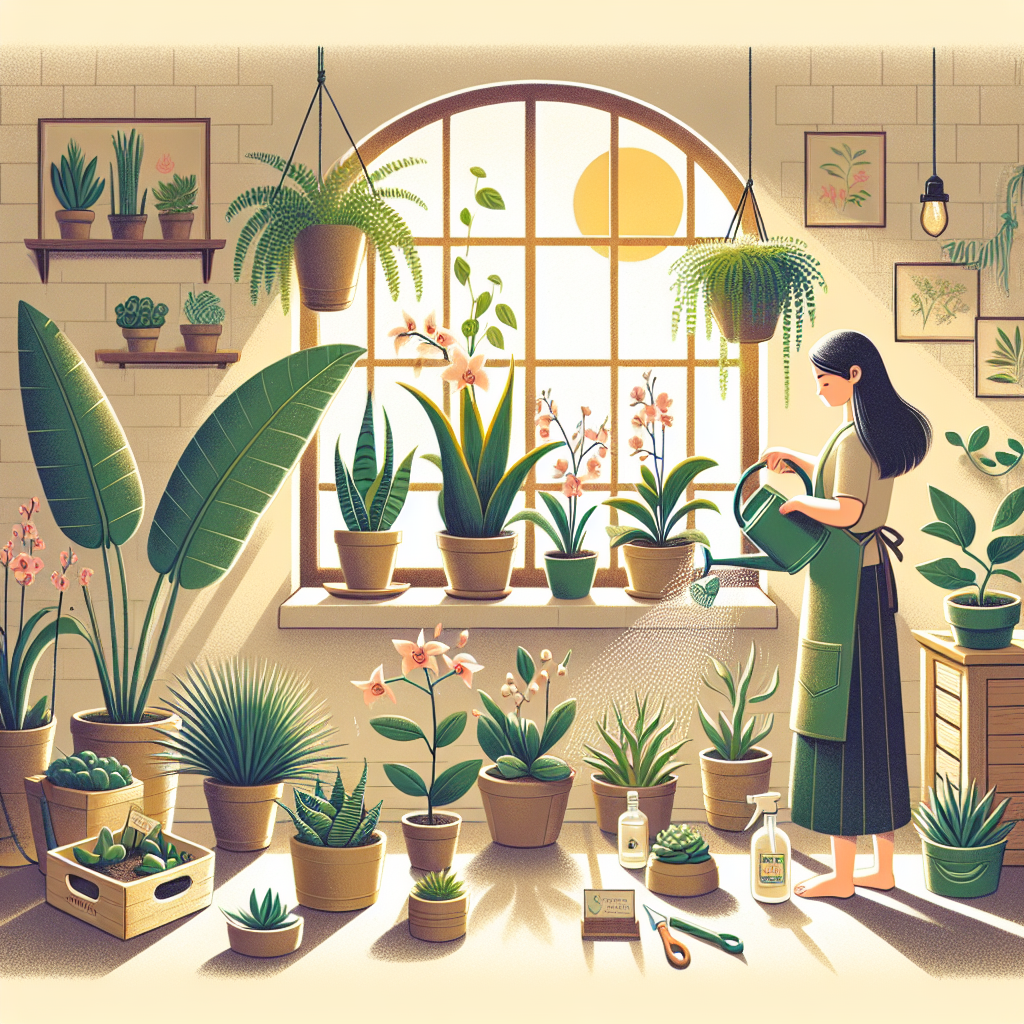Indoor Gardening: Growing Plants Inside Your Home
Gardening isn’t just for the great outdoors. For those who lack the outdoor space or want to keep their green thumbs busy year-round, indoor gardening can be a delightful and productive pursuit. Whether you’re wanting to add a touch of green to your living space, or harvest your own herbs and vegetables, the options for growing plants inside are vast and varied. Here’s how to cultivate a thriving indoor garden within the comfort of your home.
1. Choosing the Right Plants
Selecting the right plants is crucial for a successful indoor garden. Some plants are more suited to indoor conditions, while others will struggle without the open environment they crave. Easy-to-grow indoor favorites include pothos, snake plants, and spider plants. For those interested in edible gardens, herbs like basil, mint, and chives, as well as vegetables like tomatoes and peppers, are excellent choices. The Missouri Botanical Garden offers a comprehensive guide on plant selection that can help you decide.
2. Understanding Light Requirements
Light is a make-or-break factor in plant growth and health. Most indoor plants need bright, indirect light — direct sunlight can often be too intense. South-facing windows are ideal, but if your home doesn’t receive much natural light, grow lights can provide the necessary spectrum of light. LED grow lights, for example, are energy-efficient options that support plant growth. Check out the options available on Amazon to find a light that works for your space and budget.
3. Soil and Container Selection
Ensuring your plants have the right type and amount of soil, as well as a suitable container, is essential. Potting mix designed for indoor plants typically provides the drainage and nutrient balance necessary. Remember to choose pots with drainage holes to prevent waterlogging. Terra-cotta pots are a popular choice as they are porous and allow the soil to breathe, helping to prevent overwatering. For more in-depth information on soil and container selection, The Spruce is an excellent resource.
4. Watering Wisely
Overwatering is a common mistake in indoor gardening. Before watering, check the soil moisture with your finger. If the top inch is dry, it’s time to water. Always water thoroughly until it runs out of the drainage holes, and then empty the saucer underneath. Consistency in watering helps prevent stress to the plants. For more tips on proper watering techniques, visit Gardeners’ World.
5. Fertilizing for Health
Indoor plants don’t have natural nutrient sources like outdoor plants do, so they rely on you to provide them. Utilizing a balanced, water-soluble fertilizer will help keep your indoor garden lush. It’s best to fertilize during the growing season (spring and summer) and reduce feeding in the fall and winter. Grab a high-quality fertilizer from online outlets like Home Depot.
6. Temperature and Humidity Comforts
Plants are sensitive to their environment, and most enjoy conditions similar to what we find comfortable. A range of 65 – 75 degrees Fahrenheit is ideal. Many houseplants also benefit from higher humidity levels than our homes typically offer. To remedy this, consider using a humidifier or placing a tray of water near your plants to increase humidity. Grouping plants together can also help create a microclimate of favorable humidity.
7. Controlling Pests and Diseases
Indoor plants are not immune to pests and diseases. Regularly inspect your plants for signs of infestations or illness. Keeping your gardening tools clean and avoiding overwatering can help deter problems. If pests do appear, natural options such as neem oil or soapy water can be effective treatments. For more advanced issues, extension services like those from Cornell University offer excellent advice.
8. Pruning and Maintenance
Regular pruning keeps your indoor plants in top shape. Remove yellow or dead leaves and trim back any overgrowth to encourage new growth. Periodic dusting of leaves is also important so your plants can absorb maximum light. Every year or so, you might need to repot your plants to refresh the soil and give the roots more space to grow.
9. Bringing the Outdoors In
Some outdoor gardeners worry that indoor gardening isn’t rewarding. However, with the right techniques and expectations, you can cultivate a garden that brings a slice of nature into your home, offering fresh air, a bit of outdoor beauty, and even food to eat. Indoor gardening is not only a great way to improve your living space, but it also brings considerable mental health benefits by connecting you with nature.
10. Don’t Forget the Aesthetic Appeal
Finally, the way you display your indoor garden can transform your space. Consider wall-mounted planters, stylish stands, or even a living plant wall. The popularity of indoor gardening has led to an array of creative ways to showcase your plants, ensuring they contribute to the overall aesthetic of your home.
Indoor gardening is an adventure that’s well within reach. Armed with the right information, anyone can start and maintain a beautiful indoor garden. Whether you’re a seasoned gardener adapting to indoor constraints or a newcomer eager to infuse life into your living space, the world of indoor gardening awaits.
Remember, the key is to start small and learn as you go. With a bit of patience and effort, you’ll soon be surrounded by thriving plants that brighten up your indoor world. Happy gardening!


